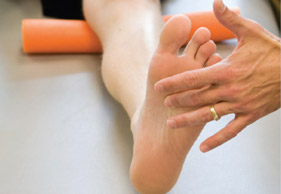During a recent visit to the physiotherapist, acupuncture was included as part of the treatment. Why is this and how does it work?
ANSWER
Acupuncture is the technique of inserting and manipulating very fine needles into specifi c points on the body to relieve pain or for therapeutic purposes. Acupuncture has been practiced in China and other Asian countries for thousands of years and is one of the key components of traditional Chinese medicine.
In traditional Chinese medicine, the body is seen as a delicate balance of two opposing yet complementary and inseparable forces: yin and yang. Yin represents cold, slow or passive
aspects of the person, while yang represents hot, excited or active aspects. Acupuncture’s underlying theory is that health is achieved by balancing yin and yang, and disease is caused by an imbalance, which blocks the fl ow of the vital energy or life force (Qi, pronounced chi) which regulates a person’s spiritual, emotional, mental and physical health. Qi can be unblocked by using acupuncture at certain points on the body and improving the body’s energy.
Acupuncture remains controversial among Western medical researchers and clinicians, because it is seen as invasive. Some reviews have concluded that the effectiveness of acupuncture as a treatment can be explained primarily through the placebo effect, while the World Health Organization published a review of controlled trials using acupuncture and concluded it was effective for the treatment of several conditions.
Acupuncture became a part of the South African physiotherapy practice in 1983 and is used predominantly as an effective way of enhancing conventional treatment, especially for pain management. Most physiotherapists however, use another form of therapy called dry or trigger point needling.
Dry needling involves inserting needles into altered or dysfunctional tissues in order to improve or restore function. This may include needling of certain trigger points or soft tissue. Trigger points are hyper-irritable spots in skeletal muscle that are associated with palpable nodules (small knots that are a common cause of pain). Activation of trigger points may be caused by a number of factors, including acute or chronic muscle overload, activation by other trigger points, psychological distress, direct trauma to the region, infections and smoking.
A successful treatment programme relies on identifying these trigger points, and resolving them by needling or by manual Myofascial Trigger Point Therapy. Physiotherapists are trained to use dry needling with manual physiotherapy interventions. Research states that dry needling improves pain control, reduces muscle tension, normalises biochemical and electrical dysfunction of motor endplates and facilitates an accelerated return to active rehabilitation. Toni Hesp – Modern Athlete Expert
Toni Hesp – Modern Athlete Expert
Qualifications:
BSc Physio (hon)
BSc (Med) Sports Science (hon)

